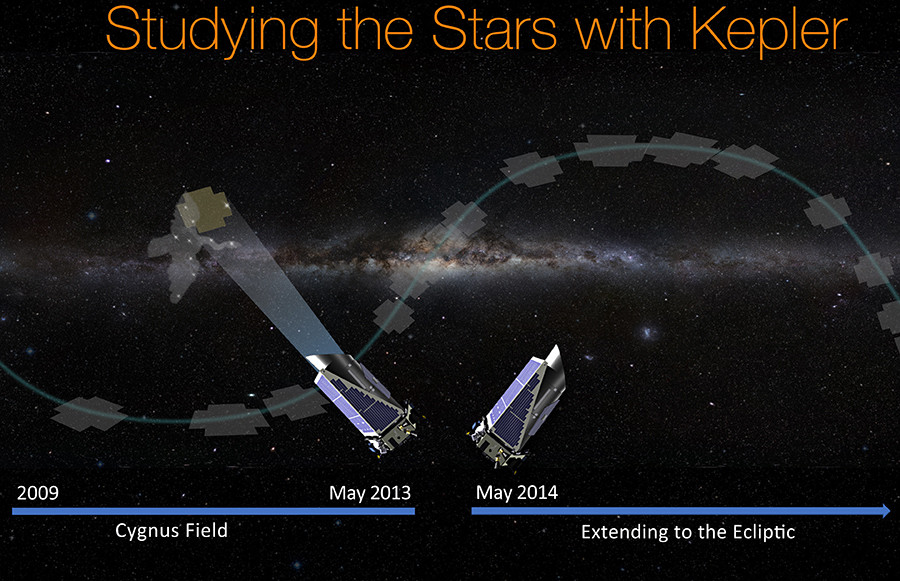
NASA / Reuters
NASA finds evidence of 10 new Earth-sized planets in our corner of the galaxy https://t.co/PU5Fq78SYk pic.twitter.com/GvTiK8CetZ
— The Verge (@verge) June 19, 2017
The identified planets occupy the 'goldilocks' zone in orbit around their neighboring stars.NASA has discovered hundreds of potential new planets — and 10 may be like Earth https://t.co/eHVIunA6AY pic.twitter.com/7Zyksm12Yz
— Lifeboat Foundation (@LifeboatHQ) June 19, 2017
The Kepler team's findings were presented at a news conference Monday at NASA's Ames Research Center in Silicon Valley, California and later published online.

Of those, a total of 50 near-Earth, habitable zone contenders have been identified, 30 of which have been verified.
The body of work produced by the Kepler telescope team will form the foundation of humanity's future searches for life in the universe beyond Earth in addition to helping us to further identify how our home planet formed.
219 potential new worlds have been identified by scientists using @NASAKepler data. Explore: https://t.co/gvIEeJnUgB pic.twitter.com/Rj51K42UkJ
— NASA (@NASA) June 19, 2017
The team has identified the specific demographics of the cosmic population: half of the planets identified so far either have no discernable surface, have atmospheres that would destroy humans instantly or have an extremely inhospitable environment that would not support life as we know it.NASA finds more Earth-sized planets that could support life https://t.co/JXDOkOQKiu pic.twitter.com/0bdE4UFRp9
— dwnews (@dwnews) June 19, 2017
The study works by cataloging transits – when a suspected planetoid passes between their star and Earth.
The telescope then measures the change in brightness caused by the transit in order to determine what kind of planetary body it is – whether it be a rocky planetoid similar to Earth or a gas giant the size of Jupiter.
A second group of researchers, based at the W. M. Keck Observatory in Hawaii, measured the sizes of 1,300 stars in the telescope's field of vision to determine the radii of roughly 2,000 planets with incredible precision.
“We like to think of this study as classifying planets in the same way that biologists identify new species of animals,” said Benjamin Fulton, doctoral candidate at the University of Hawaii in Manoa, and lead author of the second study.

One unique observation during the demographic study of the near-Earth universe found that most rocky planets form roughly 75 percent larger than the Earth. Half of these planets, however, inexplicably take on amounts of hydrogen and helium gas that causes them to swell in size until they reach the second planetary group similar to Neptune. The team affectionately dubbed them ‘Super Earths’ and ‘Mini Neptunes.’

“You'd walk in and you go, ‘Looks like a transit. Looks like a transit. Looks like a variable star.’ You know what I mean? It was like, ‘Junk, junk, variable star – ooh, planet!’ It would be like that. We stopped doing it that way,” Susan Thompson, lead author of the study and Kepler research scientist for the SETI Institute in Mountain View, California said during a NASA podcast interview.
“This carefully-measured catalog is the foundation for directly answering one of astronomy’s most compelling questions – how many planets like our Earth are in the galaxy?” Thompson said as cited in the NASA statement.
With 219 potential new worlds out there, some could be habitable & 10 of them like our own. Here's things to know: https://t.co/DIGV6HOEDR pic.twitter.com/QRUBrQuUkg
— NASA (@NASA) June 19, 2017
Several exoplanets discovered, like "Rocky Planets" which may be similar to Earth & may be places "to live in the future," NASA says pic.twitter.com/Y1uyUcKiOP
— CBS News (@CBSNews) June 19, 2017

Post a Comment Blogger Facebook Disqus